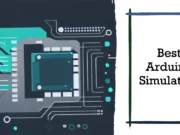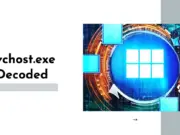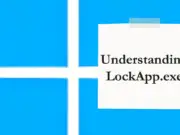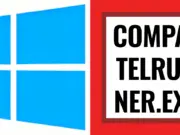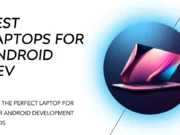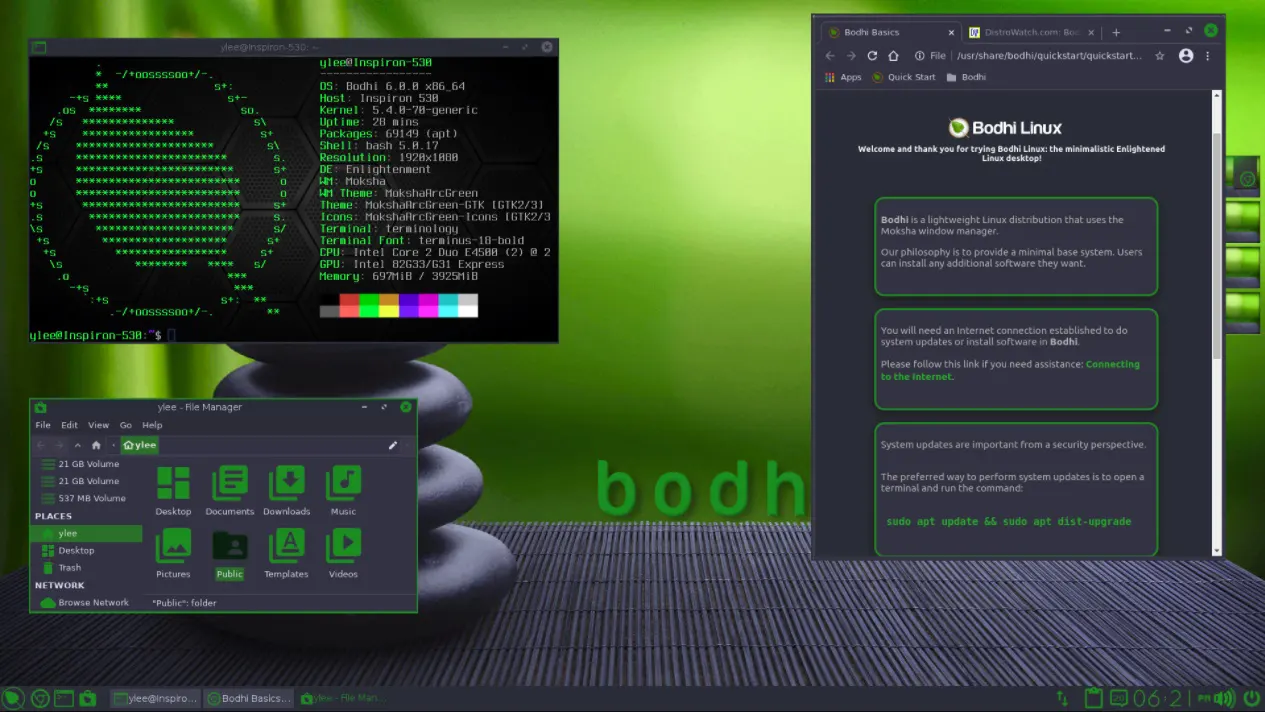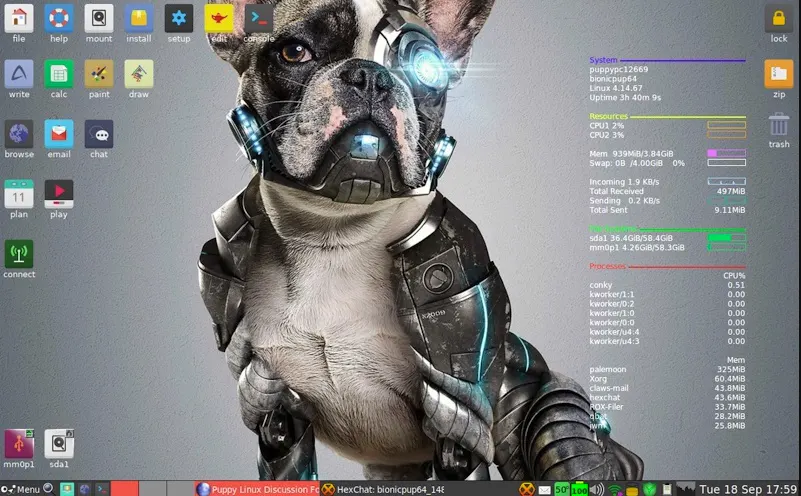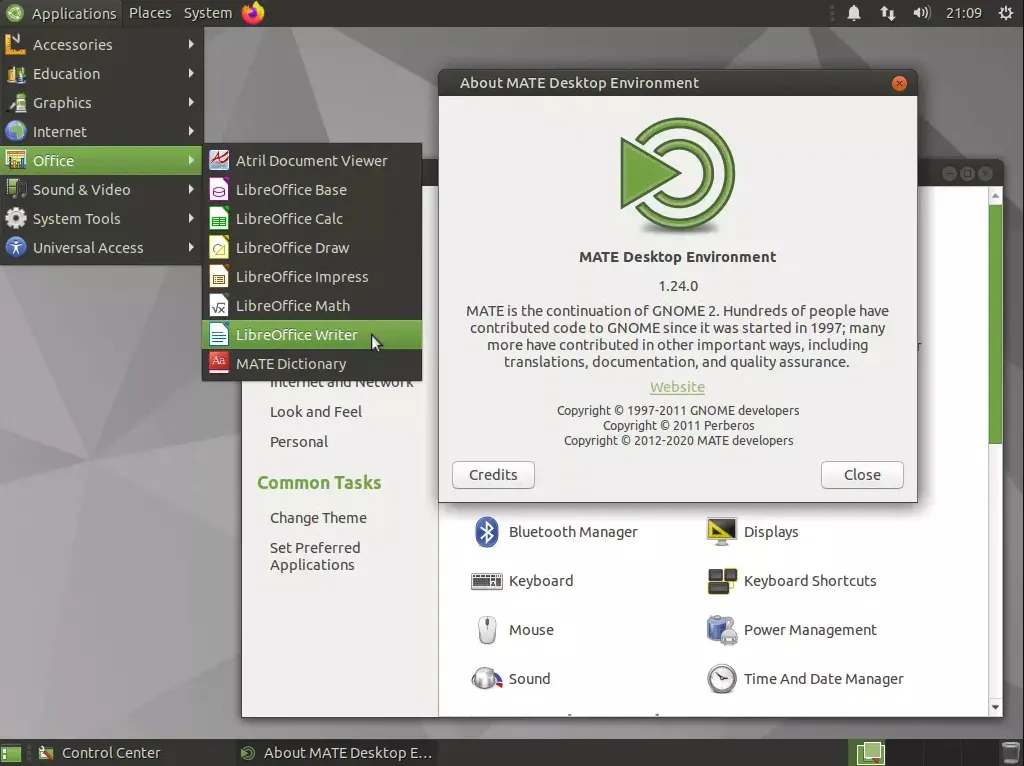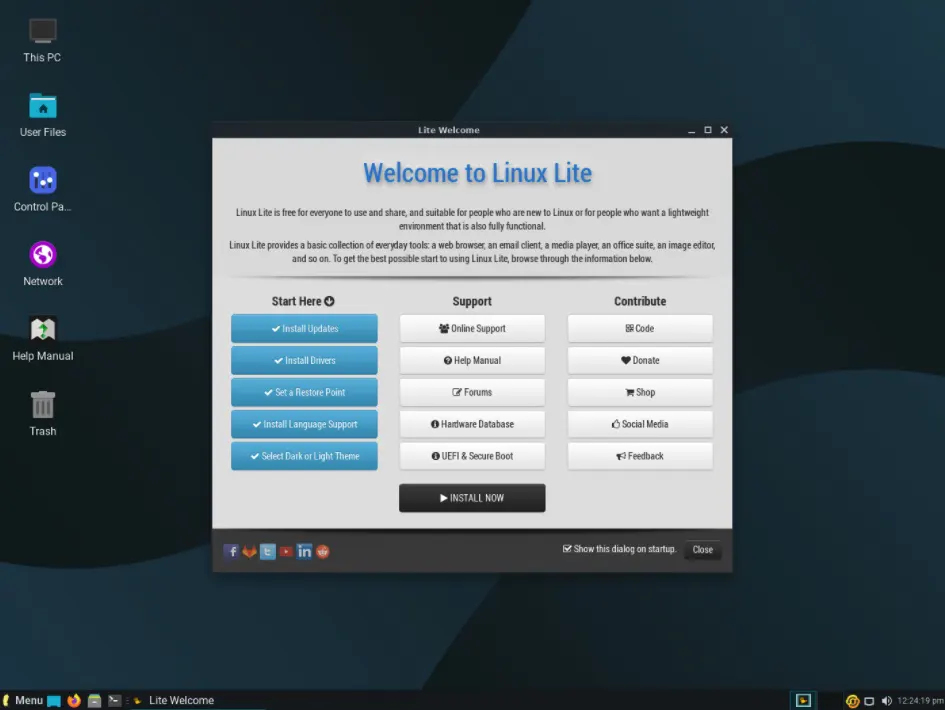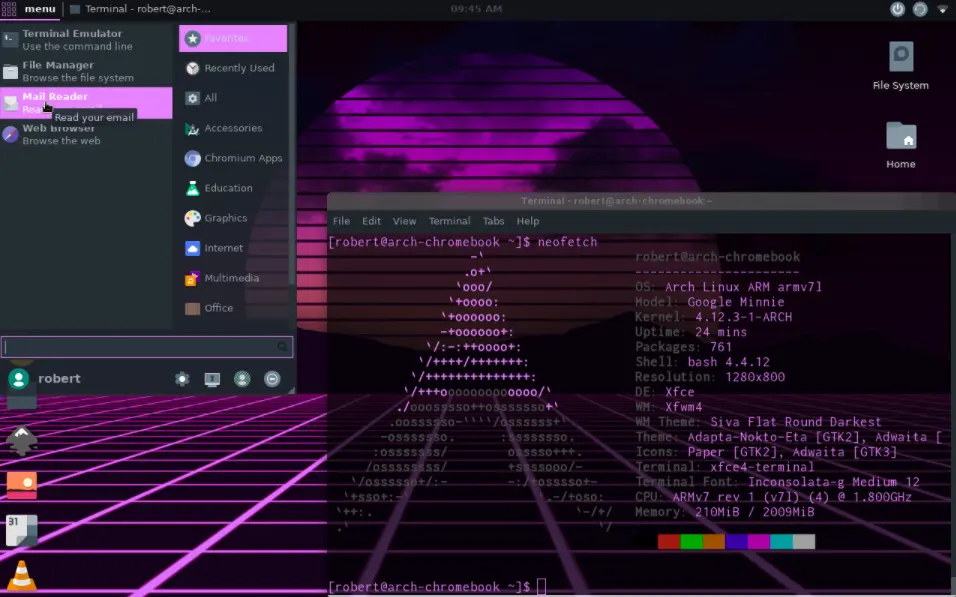Is your old laptop feeling sluggish and outdated? Are you looking to breathe new life into it without spending a fortune?💁
If so, you’ve come to the right place! In this article, we’ll unveil the secret to reviving your aging laptop and optimizing its performance: the best Linux distro.
Linux, a versatile and open-source operating system, offers a range of distributions tailored to different needs and hardware requirements.
Whether you’re a tech enthusiast or a casual user, finding the perfect Linux distro for your old laptop can make all the difference in speed, efficiency, and functionality.
Join us as we delve into the world of Linux distributions and reveal the top contenders for the title “Best Linux Distro for Old Laptops.”
Whether you’re looking to repurpose your old laptop for everyday tasks, multimedia, or lightweight computing, we’ve got you covered.
Get ready to embark on a transformative journey as we explore the features, benefits, and user experiences these exceptional Linux distributions offer.
Say goodbye to sluggishness and hello to a rejuvenated, efficient, and powerful computing experience with the best Linux distro for your old laptop.
Let’s dive in!
Best Linux Distro For Old Laptops – Our Pick👌
1. Bodhi Linux
Bodhi Linux (Download Here) is the first on our list of the best Linux Distro for old laptops subject to Ubuntu.
Unlike most different vehicles, Bodhi utilizes its Moksha work area and spotlights, giving you an insignificant system to run on more set-up PCs.
Bodhi Linux was first presented in 2011. The devs attempted to give a fast yet straightforward experience. That breaking point utilizes the lightweight Moksha Desktop and has preinstalled fundamental applications.
Acknowledging is to provide the client with a solid stage to make the needed system. It depends on the most recent Ubuntu LTS.
From the beginning, Bodhi sent with the Enlightenment work area climate. Bodhi Linux has been known as the changed Linux distro. The word ‘bodhi’ depends on the Sanskrit word for “lighting up.”
Regardless, that changed when Enlightenment 18 was passed on. The improvement was not as incredible as it was kept away from Bodhi. Enlightening 19 was passed on and fixed a piece of the issues as of now had issues.
Following endeavoring to work with the Enlightenment dev gathering and additional time, the Bodhi devs forked Enlightenment 17 of each 2015.
The new work area climate would be named Moksha, which depends on the Sanskrit word for “a promising situation, opportunity, or improvement.” You can track down the code for it on GitHub.
Bodhi 5.1.0 is the critical vehicle in an amazingly immense period, and the subsequent advancement will be set up on Ubuntu 18.04. Other than restoring social events, it has new default pictures and subjects in a like way.
This improvement makes two or three trips to the default applications. Leafpad comes preinstalled rather than Epad and GNOME Web (called Epiphany) replaces Midori). The repeater system updater was taken out.
Four fascinating Bodhi 5.1.0 accessible to download: Standard, Hwe, AppPack, and Legacy. Minimum system requirements: 500 MHz processor, 256 MB RAM, 5GB drive space.
Minimum system requirements:- 32bit, 500MHz (Non-PAE) processor, 512MB of RAM, and 5GB of drive space
Key Specifications:-
Here’s a table outlining some of the key specifications of Bodhi Linux:-
| Specification | Details |
|---|---|
| Based On | Ubuntu |
| Desktop Environment | Moksha Desktop Environment |
| CPU Architecture | 32-bit and 64-bit |
| Minimum RAM | 512 MB |
| Recommended RAM | 1 GB or more |
| Minimum Storage | 5 GB |
| Recommended Storage | 10 GB or more |
| Package Manager | APT |
| Default File System | ext4 |
| Kernel-Version | 5.4 |
| Default Applications | Midori (web browser), Terminology (terminal emulator), ePad (text editor), ePhoto (image viewer), eepDater (system updater) |
Advantages and Disadvantages of Bodhi Linux:-
Here’s a table outlining some advantages and disadvantages of Bodhi Linux:-
| Advantage | Disadvantage |
|---|---|
| Lightweight and fast, suitable for low-end or older hardware | Limited software availability compared to more popular distros |
| Customizable desktop environment with minimalistic interface | Minimal user community and limited support |
| Based on Ubuntu LTS releases, providing stability and security updates | Not as beginner-friendly as other Linux distros |
| Minimal pre-installed software, allowing for a more tailored experience | Some users may find the default interface too simplistic or lacking features |
| Uses the Enlightenment window manager, which offers a unique visual experience | Some users may find the Enlightenment window manager unintuitive or difficult to navigate |
| It can be installed on a USB drive for a portable operating system | It may require some manual configuration to get certain hardware and software working |
| It can be used as a live system for testing or troubleshooting | Not suitable for those who require a more feature-rich or specialized operating system |
| Open source and free to use | It may require some technical expertise to fully utilize and customize |
| Offers a choice between LTS or rolling release models | The rolling release model may not be as stable as the LTS model |
2. Puppy Linux
Puppy Linux (Download Here) hangs out in the Linux social class, but its name is not as familiar to the folks as other best Linux distro for old laptops.
Its respect in these customer networks is due to its notable positive credits on display.
It is reliably good because of its pre-packaged default gadgets and components that meet a Linux customer’s step-by-step figuring objective.
It is deftly adaptable to understand and promise an impressive father genial with an emoji smile.
Pup Linux has a, for the most, nothing and reduced size with the ultimate objective that you need 300MB additional space to pull it around without any problem. This distro is simple, fast, and very easy to use.
Since you can understand its system’s plan in minutes, it takes a comparable proportion of the term to modify it pleasant to you gently.
Puppy Linux is machine-flexible as per its different flavors that peacefully work on new and old PCs. This distro has a comprehensive arrangement of puppets, which subordinates produce using it.
These positive credits are what Puppy Linux offers for the current and confident customers that should be a piece of its Linux social class.
Puppy Linux is so extraordinary that we can’t pack it with these authentic Linux distros.
Debian can stay single as a particular Linux distro, and Ubuntu can, in like manner, stay lone as a lone Linux distro, yet with various flavors like Xubuntu, Kubuntu, and Ubuntu Studio.
When we use the Linux distro thought to describe and group Puppy Linux, we appear at an exciting statement.
Puppy Linux is a reliable and fast Linux distro. It gains express applications and courses of action, OS building toolsets, and shared improvement chiefs from different Linux distros to out and out gather and make its uncommon person.
We can see Puppy Linux as a crossbreed Linux distro with various Linux distro DNA impressions accumulated from different Linux families.
Notwithstanding this conceptualized definition, Puppy Linux sorted out ways to loosen up and make three other saw Linux distros. We can recognize them with several great decrees.
The Puppy Linux bunch is liable for its steady development and backing. The Woof-CE Puppy Linux system producer added to the general improvement that portrayed and requested it as a comprehensively helpful Linux scattering.
This class of Puppy Linux distros also serves the convenience of an extensively valuable Linux system despite its developmental norm or objective of zeroing in on unequivocal customer needs and (UI) appearance and plan.
Moreover, the Woof-CE Puppy Linux engineer is responsible for its contributive turn of events or headway yet uses extra adjusted packs to make it stand separated indisputably.
These distros are the reason gathered like this their lifestyle as remasters. The Puppy Linux lovers neighborhood is responsible for its constant upgrades and backing.
The distros recorded under this characterization hope to serve a specific limit, like merging the workspace environment of two little canines to outline making a Puppy Linux distro that remembers going afterword dealing with, coordinating, or even association archive sharing.
The remembered parts and show of spontaneities regarding Puppy Linux are just an unimportant detail of the miracle it returns to the Linux social class.
The Puppy Linux transparency has been low for a long time, yet the waves and tides from its discussion conversations and sponsorship networks are beginning to rise.
It is a lightweight Linux distro that sells its excellent parts and functionalities, paying little psyche to be irrelevant in size. You can experience the pound it takes from other diverse Linux distros submitted for its world.
If you question the show specs of your current or old machine gear, let Puppy Linux be the adjudicator before you excuse the comfort of your mechanical hardware.
Minimum system requirements:- 500 MHz processor, 256 MB RAM, 5GB drive space.
Key Specifications of Puppy Linux:-
Here’s a table outlining some key specifications of Puppy Linux:-
| Specification | Details |
|---|---|
| Distribution Name | Puppy Linux |
| Latest Version | 8.0 (BionicPup) |
| Release Date | April 2019 |
| Architecture Support | x86, x86-64 |
| Minimum System Requirements | 300MHz CPU, 256MB RAM, 512MB swap space |
| Default Desktop Environment | JWM (Joe’s Window Manager) |
| Package Manager | PETget (Puppy Package Manager) |
| Filesystem | SquashFS (compressed read-only file system) |
| Boot Method | Live CD, Live USB, Frugal installation |
| Size | Usually less than 300MB (varies based on edition) |
| Localization Support | Multilingual (available in various languages) |
| Official Website | www.puppylinux.com |
Advantages and Disadvantages of Puppy Linux:-
Here’s a table outlining the advantages and disadvantages of Puppy Linux:-
| Advantages | Disadvantages |
|---|---|
| Lightweight and fast | Limited software availability |
| Small installation size | The steep learning curve for beginners |
| It can run on older hardware | Limited official support |
| Portable and can be run from USB | Less polished user interface |
| Customizable and configurable | Limited enterprise-level features |
| Good for low-spec devices | Not suitable for resource-intensive tasks |
| Active and helpful community | Limited compatibility with certain hardware |
| Easy to use and navigate | Limited documentation and tutorials |
3. Ubuntu Mate
Ubuntu MATE (Download Here) is an incredible assistant to Ubuntu. It utilizes the MATE as its Desktop Environment rather than the GNOME 3 UI utilized by Ubuntu. It depends upon a fork of GNOME 2 that got reached out considering separations between the dev pack.
The split is an outcome of the new interface called the shell made for GNOME 3. The game plan was nothing similar to the normal work area found in various OSes around 2013-14, basically Windows.
Ubuntu MATE is yet another of the best Linux Distro for old laptops and is viewed as a lightweight decision rather than Ubuntu.
This is expected to accumulate actual leads the spread to appear at specific levels in the single-board joining up, in any case, called the ARM sheets. Their Raspberry Pi variation is hugely utilized for couples with needs, including mentoring and fundamental activities.
The work area looked decided and clean. You can, in any case, have the work area pictures and have the decision to put chronicles and envelopes on it.
Ubuntu MATE has a few treats for you for people who are looking for beautiful sight highlights. Tolerating the default Chelsea Cucumber green shade of pictures, features aren’t your taste.
You would now have the choice to sprinkle your work area with nine extra hiding decisions clearly from the “Welcome” menu. Each shade mixes in charmingly, including the work area foundation, and it looks incomprehensible.
The MATE social occasion would have somewhat not baffled its clients. Consequently, you get to apply the weak topic near the coverage plan. With the right tones utilized, you can make a wonderful-looking work area.
These disguising changes should be possible from the “Welcome” screen. Tolerating, you shut the welcome screen application, loosen up, and accumulate it by analyzing the Brisk menu. The invite talk box has also undergone a tremendous redesign, including present-day energy and a characteristic UI.
Ubuntu MATE pack has completed its work, and the outcomes are verifiably clear when you begin utilizing the operating system. Window Manager for the MATE work part, known as MATE, brings a few upgrades. The obscure window corner is correct and has now been added to the UI.
You don’t have to get the edge of the window to resize it unequivocally. You can rapidly snatch the side and resize the window with a more expansive vague corner.
I don’t know whether you had incited the warning picture (cost) for the MATE Panel screen-shot above, yet definitely, the MATE board has the new Indicator that shows the “notice focus.” You can set the most incredible number of obvious cautions and add/clear out the applications that are not permitted to show the observers.
It has all the earmarks of resembling the GNOME and MATE bundle had near characters during the movement as I saw the “Empower don’t angry” mode, which was, in addition, a piece of the GNOME 3.36 transport.
A much-dismissed part in other Linux spreads to deal with the firmware related to your PC’s equipment is noted by the MATE bundle.
Another GTK front end for the firmware update instrument is added that grants you, as far as possible, and reinstall firmware on gadgets kept up with by Linux Vendor Firmware Service (LVFS).
Other than that, it can open locked contraptions, avow firmware on keeping up with gadgets, and also show all movements for a firmware gadget. This is a helpful part, particularly while managing old equipment and investigating closeness.
ZFS is a duplicate on-structure filesystem for those new to this term, which can take audits of whole filesystems. This is the same old thing regarding engineers, as most moving transport constructs utilize this part to pass on new design sneak looks. With this part open to clients, they can take a depiction of their system and use it later.
Ubuntu MATE 20.04 gets GameMode, where everyone can contribute. It is an open-source project.
With this mode melded into Ubuntu MATE, gamers can generally run the kept up with games, and the system will ordinarily initiate GameMode. On the other hand, you could empower the GameMode by finishing the under-demand in the terminal.
Minimum system requirements: 500 MHz processor, 256 MB RAM, 5GB drive space.
Key Specifications of Ubuntu Mate:-
Here’s a table outlining some key specifications of Ubuntu MATE:-
| Specification | Description |
|---|---|
| Operating System | Ubuntu MATE |
| Desktop Environment | MATE Desktop Environment |
| Minimum System Requirements | Processor: 1 GHz, RAM: 2 GB, Storage: 25 GB, Graphics: 1024×768 resolution, USB port or DVD drive for installation |
| Recommended System Requirements | Processor: 2 GHz dual-core, RAM: 4 GB, Storage: 64 GB, Graphics: 1920×1080 resolution, USB port or DVD drive for installation |
| Supported Architectures | 32-bit (i386), 64-bit (amd64) |
| Package Management | APT (Advanced Package Tool) |
| Default Applications | Caja File Manager, Pluma Text Editor, MATE Terminal, Firefox Web Browser, Thunderbird Email Client, VLC Media Player |
| Software Center | Ubuntu Software Center |
| Available Software | Wide range of software from the Ubuntu repositories |
| Release Schedule | LTS (Long-Term Support) release every 2 years |
| Community Support | Active and helpful community forums and resources |
Advantages and Disadvantages of ubuntu mate:-
Here’s a table outlining the advantages and disadvantages of Ubuntu MATE:-
| Advantages | Disadvantages |
|---|---|
| User-friendly and intuitive interface | Limited official support compared to Ubuntu |
| Lightweight and resource-efficient | Smaller user base, resulting in fewer community resources and support |
| Highly customizable and flexible | Not as visually polished as some other Linux distributions |
| Stable and reliable | Limited availability of proprietary software |
| Compatible with a wide range of hardware | It may require additional configuration for certain hardware |
| Access to a vast repository of open-source software | A limited selection of pre-installed applications |
| Regular updates and security patches | Less popular among enterprise users |
| Strong community support | May not have the latest bleeding-edge software |
4. Linux Lite
Linux lite (Download Here) OS depends upon Ubuntu. It has a very lightweight XFCE work area climate.
It has Ubuntu’s Long Term Support (LTS) ideal. Linux Lite operating system, in a way, passes on an excellent design in five years following the Ubuntu discharge musicality.
It is a predictable appropriation with a significant length to assist with a 32-digit ISO. There isn’t a lot of Linux distros that support 32-bit system Linux Lite is one of them.
This is one of many benefits of this Linux Distribution. In any case, there is a trick. The 32-cycle Linux Lite OS is eventually open for the 3x series just ward on Ubuntu 16.04 LTS until April 2021.
Xfce is utilized as the default UI for Linux Lite with change. This gives a light theme to your desktop. The Xfce is changed as per oblige dull mode, exceptionally expected for Linux Lite.
Linux Lite pre-stacks regularly critical applications, not at all like vanilla Ubuntu flavor. It goes with VLC, GIMP, CD/DVD copier, LibreOffice office suites, and significantly more applications pre-stacked.
Notwithstanding those focal ones, a look at the application list also shows a wide degree of programming accessible with its default establishment. For instance, there are utilities for speedy construction data, driver establishment, plate parts, and more.
Applications pre-installed in Linux Lite are Linux Lite 5.2: GIMP, VLC, GParted, Firefox, Thunderbird, LibreOffice, GNOME Paint, Shotwell, Xfburn, Synaptic Package Manager, and Catfish File Search.
Linux Lite gives its organized application list also. Here is a screen catch of the applications unequivocally accessible with Linux Lite.
Linux Lite joins two applications for the software show. It goes with its Lite software which outfits you with an outline of programming to present and crash with a tick of a button. Similarly, the unrivaled Synaptic gathering chairman is, as of now, heavenly for clients.
The application list helps me with recalling the MX Linux Xfce release. Different pre-familiar applications are indistinguishable from MX Linux dispersing.
Regardless of how MX Linux and Linux Lite are somewhat fascinating generally. MX Linux depends upon Debian with AnTIX, and Linux Lite depends upon Ubuntu LTS varieties with GTK.
In that sense, I feel MX Linux is even more reliable (for Debian-organized) to the degree that the dispersal’s general strength expects you to utilize it as a bit-by-bit driver.
You might battle. Be that as it may, Linux Lite participates in advantage as it uses the most recent Kernel and packs subject to Ubuntu LTS variants.
Linux Lite 5.2 depends upon Ubuntu 20.04.1, so you get all the most recent Kernel restores and upstream bundles. Nearby that, it brings some enormous updates too.
Linux Lite 5.2 supports Microsoft Teams and Zoom in the Lite Software. In like way, Simple Screen Recorder is intertwined according to the typical technique.
At this point, Lite Widget and Firewall are controlled by Settings Manager. The Lite gimmick shows Laptop battery status when utilized on a laptop.
Lite Tweaks were added with taskbar restore highlight. Adobe Flash cannot be installed in Linux Lite 5.2. It can not be introduced from Restricted Extras.
Other striking changes to this resulting point discharge unite new foundations, a direct hub menu, and strengthened UEFI records for constructive cooperation.
With these pre-introduced applications lightweight, it is undeniable that this dissipating is unimaginable for adolescent Linux clients who are likely relocating from Windows.
An ideal Windows were abrogating transport for beginners with Ubuntu at its base. This development is a perfect mix of the most recent gatherings with steady quality – ideal for everyday use.
Minimum system requirements: 1 GHz processor, 768 MB RAM, 8GB drive space.
Key Specifications of Linux Lite:-
here’s a table listing some key specifications of Linux Lite:-
| Specification | Description |
|---|---|
| Operating System | Linux Lite |
| Latest Version | Linux Lite 5.6 |
| Desktop Environment | Xfce |
| Kernel-Version | 5.4 LTS |
| Architecture | 32-bit and 64-bit |
| RAM | 1 GB RAM (recommended 4 GB RAM) |
| CPU | 1 GHz processor (recommended 2 GHz dual-core processor) |
| Storage | 8 GB of disk space (recommended 20 GB of disk space) |
| Display Resolution | 1024×768 pixels (minimum) |
| Software Manager | Synaptic Package Manager |
| Default Browser | Firefox |
Advantages and Disadvantages of Linux Lite:-
Here’s a table outlining the advantages and disadvantages of Linux Lite:-
| Advantages of Linux Lite | Disadvantages of Linux Lite |
|---|---|
| Lightweight and efficient, designed for older hardware. | Limited software availability compared to mainstream operating systems like Windows or macOS. |
| User-friendly interface, similar to Windows, making it easy to use for beginners. | Some advanced features and customization options may be lacking compared to other Linux distributions. |
| Excellent performance and stability, with minimal resource usage. | Limited official support and documentation compared to more popular Linux distributions. |
| Provides a secure and stable environment, less vulnerable to malware and viruses. | May require additional configuration or troubleshooting for certain hardware components or peripherals. |
| Offers a vast range of pre-installed applications, including web browsers, office suites, and multimedia tools. | Not as widely recognized or supported in enterprise environments compared to other Linux distributions. |
| Regular updates and a supportive community for bug fixes and software improvements. | Compatibility issues with specific proprietary software or hardware drivers. |
| Customizable and highly adaptable, allowing users to personalize their desktop environment. | Less emphasis on gaming support compared to Windows, although Steam and other gaming platforms are compatible. |
| Free and open-source, with no licensing fees and the ability to modify the code according to user needs. | Learning curve for users transitioning from Windows or macOS to a Linux-based operating system. |
5. Arch Linux
Conflicting progress starting around 2002, Arch Linux (Download Here) isn’t new. It’s cultivated a gigantic, steadfast later of clients who love Arch’s fundamental mantra, where equilibrium and decision rule.
No Arch Linux establishment is practically indistinguishable, which is the appeal to Arch clients. It isn’t the easiest Linux distro for beginners to use. Arch Linux is here if you are looking for a Linux distro that can do what it is meant for.
At number 15 on the Distrowatch observable quality overview over the range of continuous months, Arch is, in like a way, one of the major Linux distros. Could we find the inspiration for why this moderate distro keeps striking?
The arch is an indisputable distro for decision, so as you can expect, picking how Arch Linux turns is indeed passed on vertically to you. The establishment of ISO doesn’t go with a work area climate in any capacity whatsoever.
The theme can be changed according to you, and many options are available for customization.
If you are installing Arch on a low-filled machine, XFCE is a simple yet effective theme you can set on Arch. Raising XFCE on Arch takes a couple of requests at the terminal nearby and some additional approaches beginning there.
As you’d expect, the presentation from an Arch establishment will move in any case. Picking a “heavier” work area climate like KDE will restrain your PC separated from an Arch Linux establishment with a lighter elective like XFCE.
Arch is smooth to use. Regardless, KDE is unquestionably not an optimal work area climate for a lower-asset PC.
The primary advantage of Arch can, in addition, be its most critical downside. It is not the easiest to use the Linux distro for rookies. How easy to use it becomes will change on the thing you choose to use with it.
Where Arch tumbles down for learners, it gets itself for Linux-trained professionals. For some Linux clients, the Arch Linux wiki is the hallowed goal. It guides you through establishment and plan. Nevertheless, don’t anticipate an essential ride.
The Arch Linux gathering is broad and filled with different clients and creators who will respond to questions and plan some help. Essentially want to see the manual.
The absolute most upsetting issue for most clients needing to introduce Arch Linux is the establishment. Tolerating that you’re coming from another dispersing like Ubuntu or Windows, without a doubt, it’s a complete monster.
No graphical installer is joined. Nothing graphic is entered, undoubtedly. Each choice depends upon you, and you’ll guess you should approve of utilizing the terminal. You’ll require the Arch wiki establishment guide, as well, to help you through it.
The curve has several rule bunch storage spaces for you to introduce your packs and exercises. The power Arch pack storage spaces merge if you want to run a pivotal Arch establishment.
A client remained mindful of storage space and combined different groups that acknowledged Arch clients have decided for thought.
If you genuinely need to track down programming, the Arch User Repository (AUR) site is a decent spot to look.
You can look for packs by articulations with consistent depictions. It’s dependent upon you to see the gatherings you’ll require. Besides, many AUR partners permit you to give applications with no issue.
Arch Linux won’t win grants for accommodation, leaving the possibility of its appearance subject to you (and different originators).
Tolerating that the KISS approach appeals to you, with control and decision at its center, then, at that point, check out Arch Linux. Arch Linux-based distros will regularly go with an overwhelming installer and UI, picked for you now.
Minimum system requirements: 1 GHz processor, 512 MB RAM, 5 GB storage.
Key Specifications of Arch Linux:-
here’s a table outlining some key specifications of Arch Linux:-
| Specification | Details |
|---|---|
| Operating System Type | Linux Distribution |
| Package Management | Pacman |
| Release Model | Rolling Release |
| Kernel | Linux |
| CPU Architecture | x86-64 (also supports ARM and other architectures) |
| Init System | Systemd |
| Default Desktop | None (users can choose their own) |
| Installation Method | Arch Linux Installer or manual installation from live CD |
| Installation Size | Minimal (around 500MB) |
| System Requirements | Minimum of 512 MB RAM and 1 GHz processor |
| Release Schedule | Rolling Release, continuous updates |
Advantages and Disadvantages of Arch Linux:-
Here’s a table outlining the advantages and disadvantages of Arch Linux:-
| Advantages of Arch Linux | Disadvantages of Arch Linux |
|---|---|
| Rolling Release:- Arch Linux follows a rolling release model, meaning you have access to the latest software updates as soon as they are released. | Complexity:- Arch Linux is known for its complexity and requires more technical knowledge compared to user-friendly distributions. It may not be suitable for beginners or those who prefer a more straightforward setup. |
| Customizability:- Arch Linux allows users to customize their system to a great extent, giving them complete control over the software and configurations. | Installation Process:- Arch Linux has a manual installation process, which involves setting up the system from scratch. This process can be time-consuming and requires a good understanding of Linux systems. |
| Access to the AUR:- Arch User Repository (AUR) is a vast community-driven repository, offering a wide range of packages not available in official repositories. | Lack of User-Friendly Tools:- Arch Linux focuses on simplicity and minimalism, which means it provides fewer user-friendly tools and utilities compared to other distributions. Users may need to configure and manage their system using command-line interfaces. |
| Lightweight and Minimal:- Arch Linux is known for its lightweight nature, allowing users to build a minimal system that suits their specific needs. | Potential Instability:- Due to the rolling release model and the constant updates, there is a higher risk of encountering software bugs or compatibility issues, which can lead to system instability. |
| Extensive Documentation and Community Support:- Arch Linux has a vibrant and helpful community that provides extensive documentation, forums, and wikis to assist users in troubleshooting and customization. | Steep Learning Curve:- Arch Linux assumes users have a certain level of knowledge and familiarity with Linux. It requires a significant learning curve for newcomers or those transitioning from more beginner-friendly distributions. |
📗FAQ on best Linux distro for old laptops list
Does Linux work better on old laptops?
Linux is often a great choice for older laptops due to its efficient resource management and lightweight distributions.
It can improve performance and responsiveness compared to resource-intensive operating systems like Windows. Additionally, Linux offers greater flexibility for customization and can breathe new life into older hardware.
What is the best Linux distro for old hardware?
Several Linux distributions are well-suited for older hardware, such as Xubuntu, Lubuntu, and Puppy Linux.
here’s a table on some of the best Linux distributions for old hardware:-
| Linux Distro | Minimum System Requirements |
|---|---|
| Lubuntu | 1 GHz CPU, 1 GB RAM, 15 GB disk space |
| Puppy Linux | 300 MHz CPU, 256 MB RAM, 333 MB disk space |
| AntiX | 256 MB RAM, 3 GB disk space |
| Bodhi Linux | 500 MHz CPU, 256 MB RAM, 5 GB disk space |
| Xubuntu | 512 MB RAM, 15 GB disk space |
| Tiny Core Linux | 46 MB RAM, 10 MB disk space |
| LXLE | 512 MB RAM, 8 GB disk space |
| Peppermint | 512 MB RAM, 5 GB disk space |
| CrunchBang++ | 256 MB RAM, 10 GB disk space |
Which Linux distro uses less RAM?
Lightweight Linux distributions like Puppy Linux, Damn Small Linux, and Tiny Core Linux are designed to use minimal system resources.
They prioritize efficiency and typically require less RAM than mainstream distros, making them ideal for older or low-spec hardware.
Here’s a table comparing several popular Linux distributions based on their RAM usage:-
| Linux Distribution | RAM Usage (Minimal Installation) |
|---|---|
| Alpine Linux | 5-20 MB |
| Puppy Linux | 60-70 MB |
| Lubuntu | 150-200 MB |
| Xubuntu | 200-300 MB |
| Linux Mint Xfce | 300-400 MB |
| Debian (with LXDE) | 350-450 MB |
| Ubuntu Mate | 400-500 MB |
| Linux Mint Cinnamon | 500-600 MB |
| Ubuntu (GNOME) | 800-1000 MB |
| Fedora (GNOME) | 900-1100 MB |
Which Linux version is closest to Windows?
Zorin OS is a Linux distribution that offers a familiar interface similar to Windows, making the transition easier for users accustomed to the Windows environment.
It includes a Windows-like Start menu and taskbar, providing a familiar experience while still offering the stability and security of Linux.
Here’s a table comparing various Linux distributions to Windows in terms of their user interfaces and features:-
| Linux Distribution | User Interface | Similarities to Windows |
|---|---|---|
| Ubuntu | GNOME | Ubuntu’s default GNOME desktop environment has a taskbar and application launcher, similar to Windows. It also has a similar file explorer and supports a wide range of software applications. |
| Linux Mint | Cinnamon | Linux Mint’s Cinnamon desktop environment provides a traditional desktop layout with a panel, start menu, and system tray, resembling the Windows interface. It offers a familiar experience for Windows users. |
| Zorin OS | Zorin Desktop | Zorin OS is designed to resemble Windows, with its Zorin Desktop environment featuring a start menu, taskbar, and system tray. It offers a Windows-like experience out of the box. |
| Elementary OS | Pantheon | Elementary OS’s Pantheon desktop environment has a clean and intuitive interface, somewhat reminiscent of macOS. However, it also shares some design elements with Windows, such as a dock and application menu. |
| KDE Neon | KDE Plasma | KDE Plasma desktop environment, used by KDE Neon, provides a highly customizable user interface that can be configured to resemble Windows. It offers a variety of customization options for users seeking a Windows-like experience. |
Is Linux faster than Windows on old laptop?
Linux is often faster than Windows on older laptops due to its lightweight nature and efficient resource management. Linux distributions are designed to run efficiently even on low-spec hardware, resulting in improved performance, faster boot times, and smoother overall operation.
What can I do with a 10-year-old laptop?
There are several practical uses for a 10-year-old laptop. It can be repurposed as a media server, a dedicated machine for web browsing and email, a file server, or a backup device.
It can also serve as a platform for learning programming, experimenting with Linux, or running lightweight applications.
Here’s a table outlining some potential uses for a 10-year-old laptop:-
| Use Case | Description |
|---|---|
| Web Browsing | Use the laptop for basic web browsing, accessing websites, reading news, checking emails, and social media. |
| Word Processing | Utilize software like Microsoft Word or Google Docs for writing documents, creating spreadsheets, and making presentations. |
| Media Consumption | Watch videos, stream movies and TV shows, listen to music, and view photos using various media players and streaming platforms. |
| Retro Gaming | Play older, less demanding games that can run on the laptop. Emulate classic console games using software like RetroArch. |
| Educational Purposes | Access educational resources, online courses, and e-books for learning new subjects or enhancing existing knowledge. |
| Programming | Learn programming languages, practice coding, and develop simple applications using lightweight development environments. |
| Offline Media Storage | Use the laptop as a storage device for offline media like photos, videos, and music. |
| Home Server | Repurpose the laptop as a home server for hosting websites, running a media server, or setting up a personal cloud storage solution. |
| Basic Graphic Design | Utilize lightweight graphic design software to create simple graphics, edit images, or design basic logos. |
| Personal Productivity | Organize your schedule, manage to-do lists, and track personal or work-related tasks using productivity applications and tools. |
| Linux Experimentation | Install a lightweight Linux distribution and experiment with different operating systems, learn Linux commands, and explore open-source software. |
| Writing and Blogging | Use the laptop as a writing tool, maintain a personal blog, or start writing a book using various writing applications and blogging platforms. |
| Media Server | Convert the laptop into a media server to stream content to other devices in your home network. |
| Digital Art and Design | Explore digital art, create simple illustrations, and practice digital painting using software like GIMP or Inkscape. |
| Retro Software Testing | Install and test older software versions or operating systems that may not be compatible with newer machines. |
| Personal Finance | Manage your personal finances, create budgets, and track expenses using financial software or online tools. |
| Remote Desktop Connection | Access your primary computer remotely using the old laptop, allowing you to control it from a different location within your home network. |
| Data Backup | Use the laptop as a backup device to store important files, documents, and photos, keeping them safe in case of a primary computer failure. |
| E-waste Recycling | If the laptop is no longer usable, consider recycling it responsibly to reduce electronic waste and promote sustainability. |
What is the oldest computer to run Linux?
The Linux kernel has been ported to various architectures, enabling it to run on various computers.
While the oldest computer capable of running Linux is difficult to determine, Linux has been successfully installed and run on computers as old as the Commodore Amiga, Atari ST, and early IBM PC models.
What is the hardest Linux OS to use?
Arch Linux is often considered one of the more challenging distributions for beginners due to its do-it-yourself approach and extensive manual configuration.
It requires users to manually install and configure various components, making it more suitable for experienced Linux users who want greater control and customization.
Here’s a table showcasing some of the Linux distributions that are often considered challenging or advanced to use:-
| Linux Distribution | Difficulty Level | Description |
|---|---|---|
| Arch Linux | Very Hard | Arch Linux follows a “do-it-yourself” approach, requiring extensive manual configuration and maintenance. It offers minimalistic installations and relies heavily on the command-line interface, making it a popular choice among experienced Linux users who prefer a high level of customization and control. |
| Gentoo | Very Hard | Gentoo is known for its source-based package management system, which involves compiling software from source code. This process can be time-consuming and requires a good understanding of Linux systems. Gentoo offers extensive customization options but demands significant technical expertise. |
| Slackware | Hard | Slackware is one of the oldest Linux distributions and maintains a conservative and minimalistic approach. It places a stronger emphasis on manual configuration and administration, often requiring users to edit configuration files directly. This distribution is suitable for experienced users who prefer a hands-on approach. |
| Linux From Scratch | Hard | Linux From Scratch (LFS) is not a traditional Linux distribution but rather a project that provides users with instructions on how to build a Linux system from scratch. It involves manually compiling and configuring all components of the operating system, making it highly challenging and suitable only for advanced users or enthusiasts. |
| Kali Linux | Hard | Kali Linux is a specialized distribution designed for penetration testing and ethical hacking purposes. It comes with a wide range of tools for security professionals, but due to its advanced nature and focus on security testing, it can be challenging for beginners or users unfamiliar with the underlying technologies. |
| NixOS | Hard | NixOS is a unique Linux distribution that employs a purely functional package management system. It utilizes a declarative configuration approach and offers atomic upgrades and rollbacks. While its concepts might be complex for newcomers, NixOS is highly regarded among experienced Linux users who value reproducibility and system stability. |
What is the oldest Linux distro still alive?
Slackware, first released in 1993, is one of the oldest Linux distributions still actively maintained. It has a long history and maintains a strong focus on simplicity and stability, making it popular among advanced Linux users.
What is the oldest Linux distro that is still maintained?
Initially released in 1993, Debian is one of the oldest Linux distributions still actively maintained. Known for its stability and extensive package repositories, Debian has a large community of developers and users who continue to support and update the distribution.
Can I Run Linux On Old Laptops?
Yes, you can run Linux on old laptops. Many people prefer using Linux on old laptops to increase their longevity.
Most of the Linux operating systems are compatible with the laptop’s hardware, even the old ones, and that’s why they work fine on laptops with not-so-good specs.
In most cases, Linux is faster than Windows, so if you use an old laptop, you might perform better with Linux than with Windows.
What Is The Best Linux Distro For Old Laptops?
If you have a laptop with not-so-good specs that seems outdated now, you can use a lightweight Linux Distro like Arch Linux.
This works fine with most old laptops and gives you a smooth performance. There aren’t packages that you won’t need. You can install the software you need, but there won’t be anything extra.
Which Linux Is Best For Low-End PCs?
If you are looking for a Linux OS to run on an old or low-end PC, then you can go for Tiny Core, Puppy Linux, SparkyLinux, antiX Linux, etc.
Is Debian Lighter Than Ubuntu?
Ubuntu and Debian are two of the most popular Linux operating systems. However, when compared with each other, Debian is much lighter than Ubuntu.
If you have old hardware, then Debian would be preferred. Debian, a lightweight Linux, will give you smoother performance than Ubuntu.
Which Linux Distro Uses Least Resources?
There are various Linux Distro that uses the least CPU resources. You can use Bodhi Linux, MX Linux, Linux Lite, Xubuntu, or Peppermint OS if you are looking for a lightweight Linux operating system.
Which Linux Is Best For Everything?
Overall, Ubuntu is the best Linux. Ubuntu is versatile, with an active community introducing new features and providing long-term support.
Anyone can use Ubuntu, and you will find various applications and plugins that work better on Ubuntu than on other Linux OS. Moreover, you will find various guides for Ubuntu, as it is quite a popular Linux Distro for PCs.
Conclusion
In conclusion, when finding the best Linux distribution for an old laptop, it’s important to consider performance, compatibility, and user-friendliness.
After analyzing several Linux distributions, we can confidently say there is no one-size-fits-all answer. However, a few distros stand out from the rest in terms of their ability to breathe new life into old hardware.
If you’re looking for a lightweight and resource-friendly option, Xubuntu is an excellent choice. Its XFCE desktop environment perfectly balances simplicity and functionality, ensuring smooth and efficient performance on older machines.
For those seeking a beginner-friendly Linux distro, Linux Mint, with its Cinnamon desktop environment, provides a familiar and intuitive interface, a wide range of software and excellent hardware compatibility.
If customization is your priority, give Lubuntu a try. Its LXQt desktop environment offers a highly customizable, lightweight experience, making it ideal for older laptops with limited resources.
Lastly, if you’re willing to invest some time in learning a more advanced distribution, Arch Linux offers unparalleled flexibility and control.
Although it requires a bit more technical knowledge, Arch Linux allows you to build a tailored system that maximizes the performance of your old laptop.
Remember, the best Linux distribution for your old laptop ultimately depends on your specific needs and preferences.
Take the time to experiment with different options and find the one that strikes the perfect balance between performance, compatibility, and ease of use.
In conclusion, with the right Linux distribution, your old laptop can become a powerful tool once again, unlocking its true potential and extending its lifespan.
Embrace the world of Linux, and enjoy a fast, secure, and feature-rich computing experience on your aging hardware.






